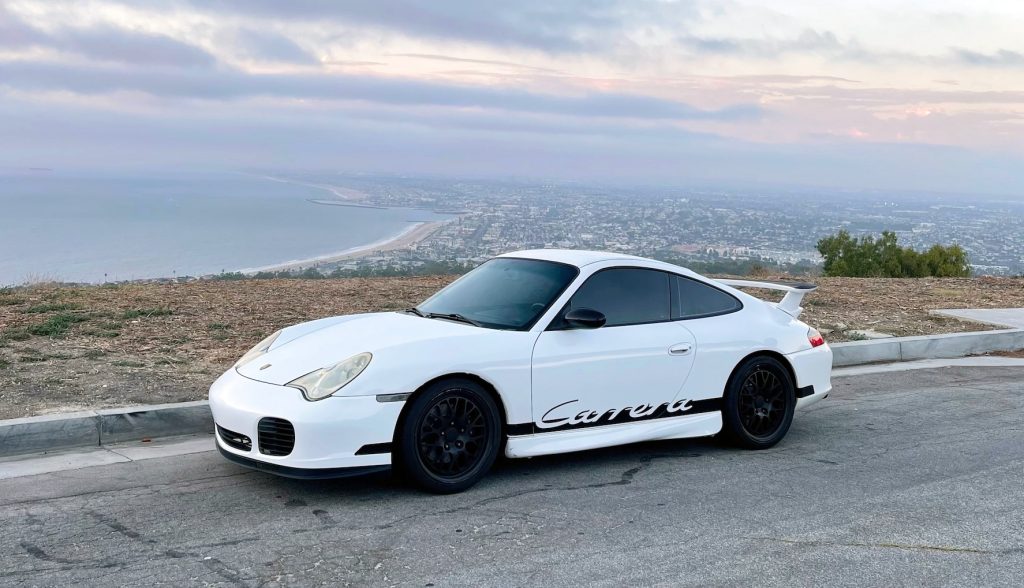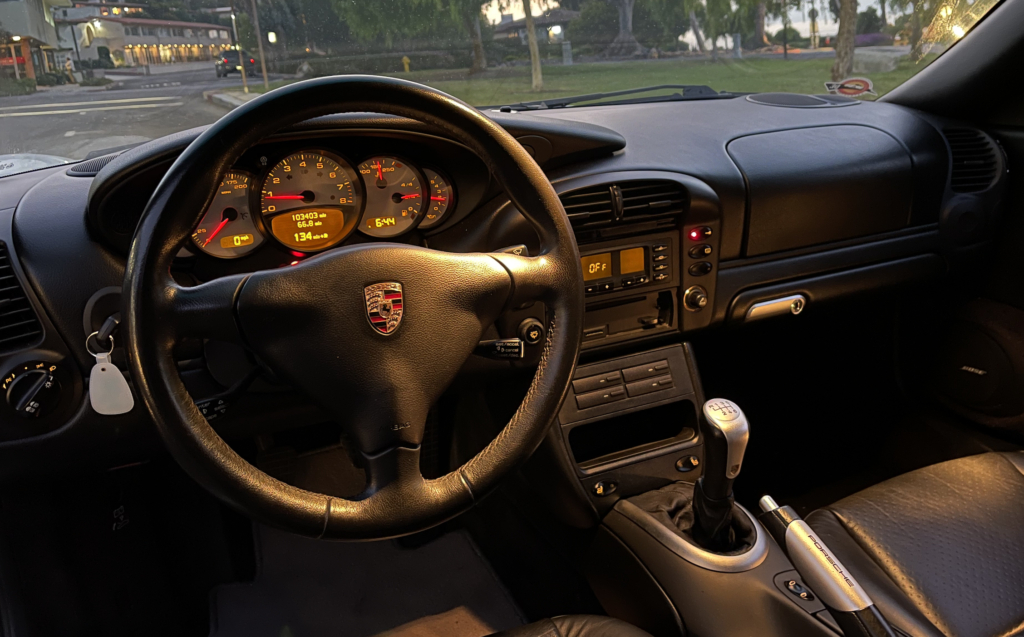Editor’s note: While this story was published by our esteemed colleagues over at Hagerty Media in the ‘States, the cautionary tale is something all car enthusiasts can relate to… James Mills.
If you delve into the comment section on an episode of Tom Cotter’s Barn Find Hunter series on Hagerty’s YouTube Channel, you’ll find some enthusiasts view the dusty, rutsing expanses of MGs and Mopars less as an exciting archeological survey of unearthed automotive riches, and more as a cautionary tale to drive and enjoy your cars lest they turn into an unusable relic.

A noble sentiment. But not all enthusiasts have space, storage, cash, a reliable specialist, or a combination of all these factors. Some cars are one big bill away from being parked for decades. Or, maybe not so big; life has a way of pouring coolant in our oil from time to time.
Ask me how I know. Or maybe ask my 2002 Porsche 911 Carrera that same question. Until two weeks ago, it was an inoperable and very dirty albatross around my neck.
The more a car sits, the more the problems, bills, and guilt compounds. Prior to its recent resuscitation, I fed and nurtured an unbreakable loop of “I’ll get around to it when [X].” The variable input here is a rotation of [more money], [time], and/or [not lazy]. It sat for a little more than a full year before I decided to solve for [X].
Even six months in, I was sure I was screwed. I knew – I knew – the car would exit its dusty carport with rodent-gnawed wiring, congealed oil, locked brakes, varnished fuel, and a mouldy interior. It wasn’t until over a full year in when I got a grim prognosis that lit a fire under my backside.
“What’s the worst thing you can do to a 996?”
Like you, probably, I already knew the answer, but I had to ask. I’m a supplicant to my neuroses, and there was no way I would finish a visit to Flat Six Innovations, which I wrote about earlier in the year, without inducing a low-grade anxiety spiral. Jake Raby’s rural Georgia workshop is sanctum sanctorum for anyone emotionally involved with a Porsche 996, with Raby himself as the ultra-maestro behind what are inarguably the best M96 and M97 engine builds this side of Neptune. On the subject of 911 engines, his word is gospel.
“The worst thing you can do to a 996 is let it sit,” Raby said bluntly.
2,300 miles away, my 996 sat. “What year is your car?” Raby asked after I fessed to this neglect. I told him it was a 2002 Carrera. “3.6? Ah, so that’s the worst one too, at least from a mechanical standpoint,” he explained as my life expectancy visibly wicked away. “Those engines have a higher amount of fail points than any other variant of M96.” My stomach felt as though I’d swallowed a brake calliper.

It’s not like I planned on mothballing the 996 for so long. Heck, I parked the Carrera sometime in late 2020 – maybe early 2021 – as a healthy, running car. There were a few things on my checklist to fix, all non-critical. The fluids were fresh, the notorious IMS bearing was recently sorted, and the tyres new. It ran and roared with alacrity unbecoming of its six-figure mileage and its unshakable reputation as an intricately engineered German hand grenade.
Much of the motivation behind this hibernation arrived as a side-effect of my career. My previous post was at national car magazine, cycling me through a ceaseless fleet of press cars that ranged from the most basic Corolla to the latest ballistic from McLaren. It’s easier to navigate the broken and brutal roadways of Los Angeles in something soft and boring than sharp and thrilling, so mundane commutes were dispatched in a CR-V or BMW X7 or Acura MDX or whatever.
The 996 sat.
Supercars, Hellcats, M3s, and plenty of Porsches filled the gaps in my schedule like a light dusting of meth.
The 996 sat.
Here’s where I shift some blame unto the car itself. As is the case with most early 2000s German cars – or German cars of any vintage, really – the name of the game is excessive engineering and complication for the sake of complication.

Consider the location of my car’s battery. Porsche slotted it against the front firewall and just above the front boot storage space. In the transition from the 996.1 (1999-2001) to the 996.2 (2002-2004), some genius decided the 996.1’s cable-operated frunk (for the benefit of uninitiated Brits reading this, that’s front trunk) release lever to be too rustic, too agricultural. No, it’s most logical to lock the 996.2’s battery behind an electric frunk switch on the interior.
If your battery gets too low, you cannot pop the frunk lid to access said dead battery with the interior switch. Naturally, Porsche engineered an analogue failsafe for just this occasion in the form of a braided-steel frunk release cable, only, it’s located in the passenger-side front wheel-well, behind the liner, and is usually only accessible if you remove a wheel and reach in with a coat hanger hook. German engineering!
Prior to the 911’s long sleep, I kept track of how long it had been since my last weekend drive and removed the almost-dead battery before it crossed the threshold of not being able to pop the frunk. With no outlets available in the parking area, I’d charge the battery inside my apartment before reinstalling it for a short drive. Of course, that workaround works only if you don’t have any longer-than-expected absences, which, inevitably I did. The battery died in the car.
The 996 sat.
I dreaded the resurrection ritual ahead of me. The battery was old, and way beyond jump starting – an arcane and very sketchy process on the 996 that involves a tiny retractable jump post in the driver’s footwell – so a tow was required. Its tomb née carport is in an alarmingly narrow alleyway that runs alongside the apartment building, so getting a towtruck larger than one based on a standard HD chassis is impossible. Oh, and the building is constructed into the side of a slope, so the entrance ramp is far too steep to push the dead car up with only manpower.

This reckoning arrived after a year and a half, when I finally decided to take the first step in heeding Raby’s advice. The first tow truck from Hagerty Roadside Assistance couldn’t fit. The second truck made it down with only a picometer of clearance, but skedaddled when I sheepishly admitted I didn’t have the screw-in towing eye that slots in the front bumper. It was either find a tow hook, or risk ripping the front bumper off.
I sourced the requisite towing eye. Not wanting to play tow-truck roulette, I called a few tow companies and shopped around my predicament. $250 got my car expertly extracted from its cavern and delivered for its health check.
This was the first time this specialty Porsche/BMW workshop had seen and serviced my car, and I gave them plenty heads-up on what to expect. I pre-approved a new battery, a full fluid change, and a fuel tank flush, alongside a paid walkthrough inspection with a master tech to see what’s gone to hell as a result of my neglect and what might need replacing in the future.
The tech gave it to me straight. The oil was… clean? The brake fluid had some water in it but that wasn’t a problem. Are you sure? He was. It was time to swap transmission fluid but the old stuff came out without shavings or glitter. I told him to check again.
It just got better and better. If you haven’t gleaned from this treatise or my prior dissertation on the wonders and woes of owning a fun car in LA, I’m nuts. I’m obsessed with classic cars, but driving them in LA traffic and around our awful infrastructure makes my teeth fall out from maintenance anxiety. I need to chase problems on an old(er) Porsche like I need a case of the mumps.

So, when the tech said, “I can’t imagine ever finding a mechanically cleaner 996 with this mileage,” my knees almost buckled. I bought this car from a dear friend who maintained it to an exacting degree, but I expected my 5,000 miles of driving and a year in the shadows to have unraveled all his good work.
I’ve put 78 miles on the 996 since it came back from the shop two weeks ago. It runs great. It runs like it was never parked in the first place. There are no electrical issues, no sagging body panels, no rust, no leaks. No smoke on startup, and no suspect sounds. The overrev counter was unremarkable, the camshaft deviation is essentially nil. Lord, I lucked out.
Never again. You hear me? Never. Again. With less travel and other cars distracting me, this wonderful car is going to see substantially more seat time than it did before. There are things I’d like to fix, including the old wrap – long story – and shifting the aesthetics from faux-GT3 to that of a 996 GTS from an alternate timeline. But that can wait.
Maybe this is your notice to pull off that car cover. Drop your car down from those jackstands, and take it off the trickle charger. There’s very little that can’t be fixed, and you never know – it could be a whole lot less catastrophic than you expected.
Via Hagerty US
Read more
After 25 years, the 996 Porsche 911 has come of age
Porsche 912: Poor man’s 911 or something more?
First drive: This Jaguar E-type is running on sustainable fuel – how soon before your classic is too?










This sort of thing is my double-edged sword with German automobiles: They’re really well-engineered, but that engineering comes at often a steep price.
I just did a ridiculous, higher-average-speed road trip in a somewhat worn out, somewhat neglected, mid-2000’s Mercedes C240 4 Motion sedan, and it’s still comfortable at double the speed where my American garbage begins to create a wee bit of terror.
The American garbage, however, is ridiculously simple to repair and maintain, whereas the Mercedes has random trouble issues routinely popping up and disappearing, I’m nervous about whether or not that new OEM replacement crankshaft position sensor (cleverly buried behind the engine, and under a bracket or two) is going to fail, or that new fuel pump is going to take a dump, or if any other number of potential Mercedes problems will assail me on any sort of lengthy road trip.
There are very few cars or trucks in America that can measure up to even the shoddiest of German engineering, but I don’t typically have the worries that German machinery generates when I’m behind the wheel of one of my crappy American beaters.
Sigh. I’m sorta thinking of a 987 Cayman S at some point…